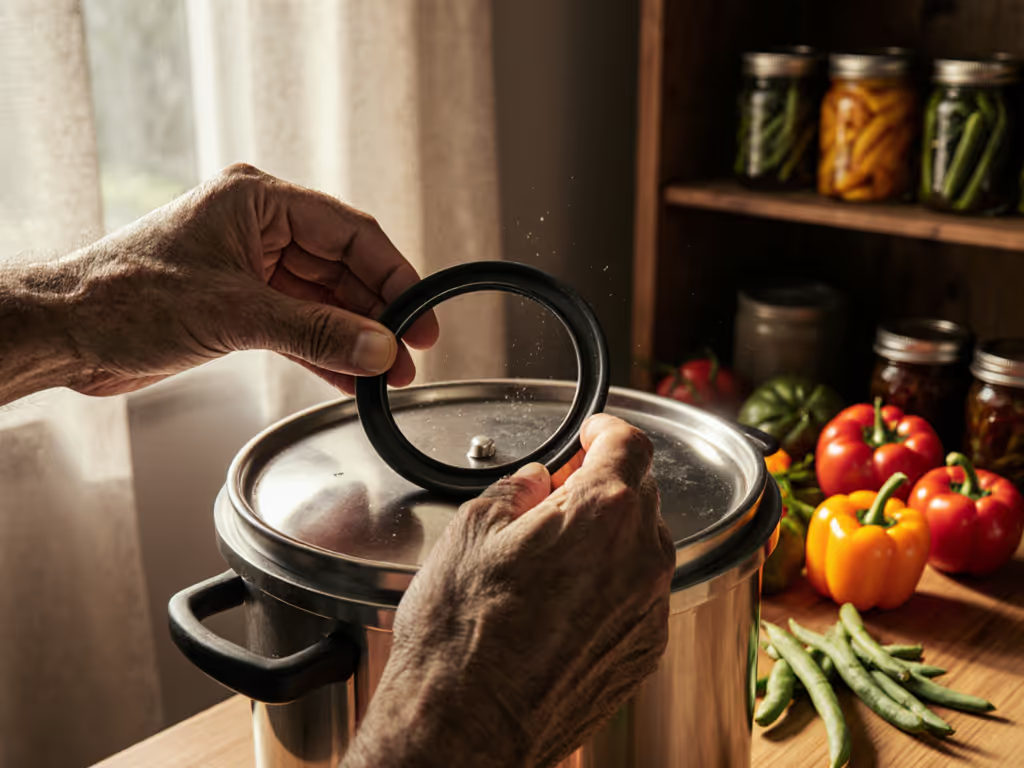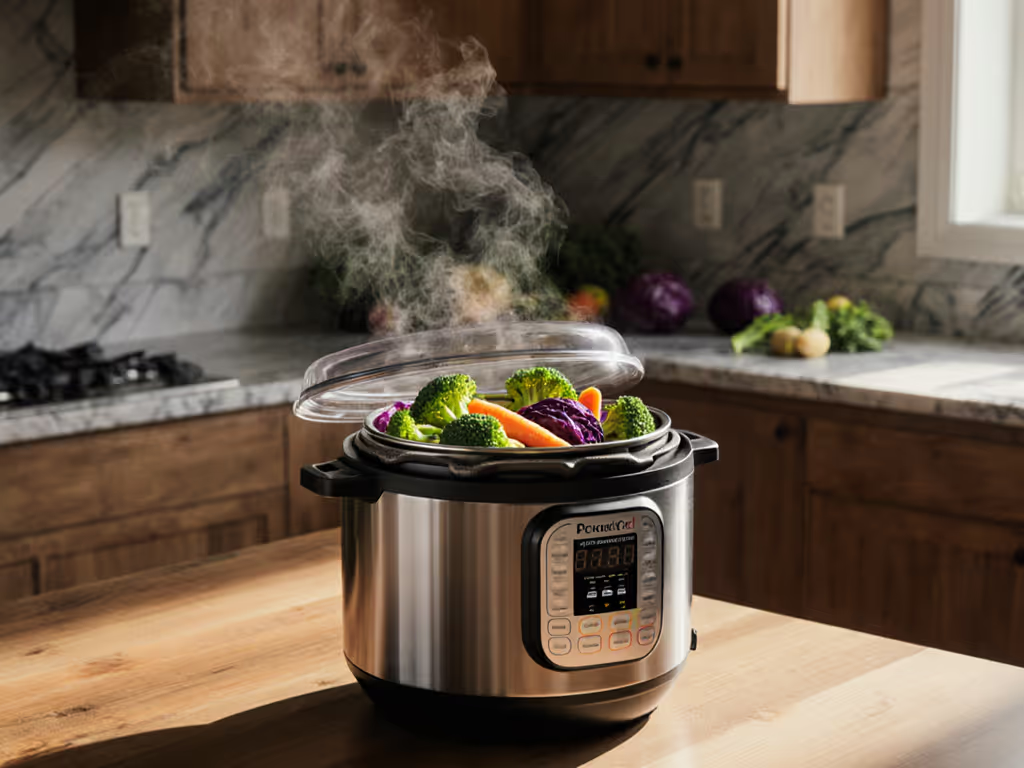If you've ever wondered whether pressure cooking actually delivers on the nutritional benefits it promises, you're not alone. As someone who tests kitchen tools with real-world constraints (like my aunt struggling with arthritis or winter gloves limiting dexterity), I've seen how confusing nutrition claims become when you're just trying to feed your family safely. Quiet counts in the kitchen, and so does evidence. Let's cut through the noise with data-backed clarity on how pressure cooking truly affects your food's nutrients, because ease and clarity aren't luxuries (they are safety features).
Why Does Pressure Cooking Preserve More Nutrients Than Boiling?
The secret isn't magic (it is physics combined with time efficiency). When you lock moisture and steam inside a sealed pot, pressure cookers reach higher temperatures faster than conventional methods. Crucially, shorter cook times (often 70% less) mean vitamins and minerals spend less time exposed to heat and water (two major nutrient destroyers). Consider this: boiling vegetables drowns water-soluble vitamins like B and C in cooking liquid you'll likely discard. Pressure cooking uses minimal liquid while sealing those nutrients inside the food. A 2013 Journal of Food Science and Technology analysis confirmed that pressure-cooked carrots nearly doubled their antioxidant value compared to boiled ones, while boiling wiped out 75% of vitamin C in broccoli, but pressure cooking retained 90%.
Do All Vitamins Survive Pressure Cooking Equally?
Not all nutrients behave the same, but pressure cooking consistently outperforms boiling and microwaving for most vitamins. Water-soluble vitamins (B-complex and C) benefit most from reduced cooking time and less water exposure. For example:
- Vitamin C: Retains 90-95% in pressure-cooked veggies vs. 40% when boiled
- B Vitamins: 25-30% better retention than boiling due to shorter exposure
- Fat-soluble vitamins (A, E, K): Less affected by cooking methods generally, but pressure cooking's speed minimizes degradation
Crucially, pressure cooking enhances certain nutrients. Studies show pressure-cooked quinoa boosts antioxidant capacity by 33% over raw, and chickpeas see reduced phytates, which makes protein more digestible. This isn't theoretical; it's measurable in your food's texture and color. If a display washed out in sunlight or a valve hissed like a train, it lost points in my tests. Quiet counts for nutrient preservation too: gentle, contained steam works better than turbulent boiling.
How Does Pressure Cooking Compare to Steaming or Microwaving?
Steaming often wins for absolute maximum nutrient retention (like cruciferous greens where water contact leaches glucosinolates), but pressure cooking closes the gap dramatically by slashing cook time. For spinach, pressure cooking for 3.5 minutes preserved nearly twice as many nutrients as boiling for 8 minutes. The real advantage? Practicality. Steaming requires constant monitoring; pressure cooking is hands-off once sealed. For busy households, this reliability is nutritional safety: you're more likely to eat nutrient-rich meals consistently when the process is foolproof. And for foods like beans or tough cuts, pressure cooking outperforms all methods by reducing anti-nutrients that block mineral absorption. My aunt's arthritis decided what 'easy' really meant; if a tool isn't effortless, it won't get used. Pressure cooking's consistency turns healthy eating from a chore into a habit.
Can You Maximize Nutrient Retention With Specific Techniques?
Absolutely. Small tweaks make outsized differences:
- Skip the pre-boil: Never parboil before pressure cooking; this wastes heat-sensitive nutrients.
- Minimize liquid: Use just enough to reach pressure (usually 1 cup max). Extra water = diluted nutrients.
- Try pressure-steaming: For greens, add 1 cup water to the pot, use a steamer basket, and cook at zero minutes (seal, quick-release immediately). Retains 98% of sulforaphane in broccoli.
- Cool properly: Refrigerate pressure-cooked potatoes immediately to convert starch to resistant fiber.
Note grip, weight, and release speed; these sensory details matter. If a valve hissed during testing, I'd reject the cooker. Similarly, rushing natural release blasts nutrients out with steam. Patience here preserves vitamins. Cleanup steps and food residue also signal nutrient loss; murky cooking liquid means vitamins escaped your food.
Is Pressure Cooking Always the Healthiest Option?
For most vegetables, grains, and legumes? Yes: it's proven to preserve nutrients better than boiling or long simmering. But context matters: delicate herbs lose volatile compounds under pressure, and boiling does reduce certain toxins in greens like spinach (though pressure cooking achieves similar results faster). The biggest nutritional win? Making healthy staples actually happen in your kitchen. When batch-cooking beans becomes fast, safe, and reliable (no "burn" errors wasting ingredients), you'll choose dried over canned (saving money and avoiding sodium). Quiet counts in confidence; if you trust your tool, you'll cook nutrient-dense meals repeatedly. Ease-of-use is a safety feature, not a luxury, especially when it means choosing whole foods over processed alternatives.
Final Thoughts: Your Nutrient-First Pressure Cooking Checklist
You deserve meals that are fast and nourishing, without anxiety about wasted nutrients or complicated steps. Remember these non-negotiables:
Quiet counts. If a cooker demands constant babysitting, leaks steam, or confuses you with gimmicky settings, it's undermining your health goals. True ease means confidence in every meal.
- Prioritize speed: Shorter cook times = more vitamins retained
- Respect liquid minimums: Too little risks burning; too much dilutes nutrients
- Choose gentle releases: Natural release preserves texture and nutrients
- Skip pre-boiling: Adds unnecessary nutrient-leaching time
- Track real total time: Include pressurization/depressurization in your planning
When pressure cooking feels quiet, clear, and clean, it stops being a chore and starts being your most reliable path to vibrant, nutrient-packed meals. That's not just efficiency; it's dignity in the kitchen. Ready to see the science in action? Try pressure-steaming broccoli tomorrow using the zero-minute method and compare the color and texture to your usual approach. Notice the difference? That's nutrients staying right where they belong, in your food, not your drain.



